Last week I participated in a trip to Miramar Mounds National Natural Landmark that I helped organize for a group of us from the local native plant society. Only a few visitors get to visit every year, so we were lucky to have the opportunity. JoEllen Kassebaum, Botanist for Marine Corps Air Station Miramar, interpreted for us.
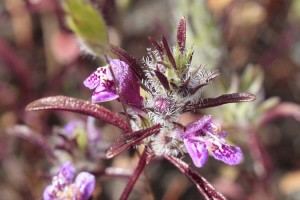
Several endangered species call the Landmark home. The best-known is probably San Diego mesa mint, Pogogyne abramsii, a plant with extremely limited distribution.
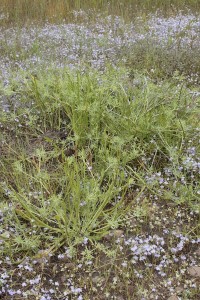
San Diego button celery is another endangered plant found on the Landmark. Both these species live only in vernal pools. The issue isn’t so much that the plants are wimps. Give them a little depression filled with water for a few weeks and they thrive. They’re endangered because the gently rolling terrain that favors the creation of vernal pools is also easy land to develop. (Sad to say, my house probably sits on land where vernal pools were found sixty years ago.)

The superstar of the pools last week, however, was the toothed calicoflower, Downingia cuspidata. The way it grows only in the pools creates a really cool effect when it blooms. The land around the pools is whatever color the chaparral is, but the pools become this solid mass of soft lavender.


Sorry for sharing so many of the downingia photos, but the displays were way too amazing not to!
And there were other things blooming away. Here’s a small sampling.

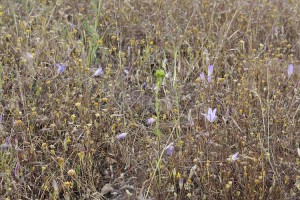

Bounded by freeways on two sides, a city landfill on another, and runways of the Marine airbase to the north, it’s an unpromising location for 400-plus acres of rare vernal pool habitat. The Landmark, dedicated in 1972, remains a part of MCAS Miramar. The land isn’t technically a preserve–national security interests could cause the land to be withdrawn back into military use. But the same reasons that make this an unlikely location for a nature destination–the freeways, the dump–also make it a compromised location for military activities. We can keep our fingers crossed that it remains dedicated to preserving these rare resources.

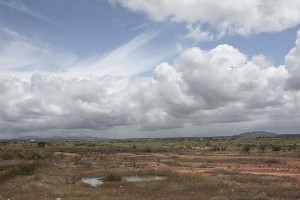
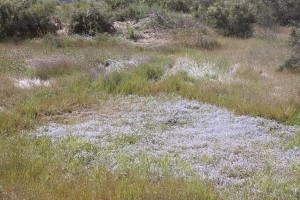
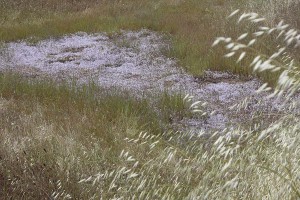
I hadn’t heard of the place or the plants. That dowingia is nice. It does have a nice pond of wildflowers affect.
we were able as part of the Canyoneers of SD NAT to get into some of these obscure off limits area in SD CA. to research the
vernal pools !!!! tthis is ancient history. The location I remember
best is near here. western edge of Mission Gorge was always a good spot as well as Locations off 52 esp before they opened the
eastern portion when you could bike with no traffic and get off
anywhere you wanted. GLORY DAYS DG
Would you, do you, grow any of these plants in a bog garden at home? The pond of mauve flowers reminds me of our vlei lily. Similar lifestyle in a seasonal pond. I have two pots in one of our bogs. Green leaves are up now. Flowers this year?
We have a last tiny remnant of a rare plant community at Youngsfield Air Base in greater Cape Town. Sand flats protected from development so far by military use, but very tempting for housing development.
Hey there, BOG is immediately interesting! I thank the botanists
scientists that are into this stuff!!!! Just finishing up THE WILD
TREES….people researching the canopies of the tallest trees on earth?!!! By climbing 370 feet and sleeping on the top of the world!@ Thanks DG
Gorgeous, and so delicate, and yet so strong. Reminds me a lot of the short grass prairie around here–or, mor precisely, what one should look like or once did.
Ryan, even most of the locals have no idea it’s there. There’s some discussion of maybe developing it with public boardwalks between the pools so that people can actually visit the place.
EE, these pools are definitely seasonal, and most of my bog plants are moist year-round. I suspect the downingia might not like those conditions. But I do have a small pot-full of some wet-winter/dry-summer bog plants that would be campatible. I should keep an eye out for seeds of this plant. It sounds like South Africa has unintentional nature preserves as we do over here, where military bases shield land from the ravenous developers.
Benjamin, I’m prairie-deprived and only have enjoyed the prairie in bloom via photos. The integration of the grasses with more charismatic flowering plants results in a wonderfully kinetic texture.
I’m a 73 yr old San Diego native and today is the first I’ve heard of it. I knew of vernal pools and have seen them from the 163. We used to go through the fence from the side US 395 (now Kearny Villa Rd) when I was a kid and fish one of the ponds on the base. Things were a bit different back then.
Sounds like you got to experience the area in the early days. Lucky you! I had a chance to go back a couple months ago for the first time since I did this post. They have some boardwalks now to protect some of the more sensitive areas, but access is still tightly restricted through the Marine base.
Amazing! Isn’t it great what can happen without people?
Is permission required to visit? If not, I’m guessing access would still be restricted to some extent and for sure during the annual air show.
TM, absolutely! Just image thousands of acres looking just like this before the humans arrived…
George, unfortunately access is restricted at all times since it’s part of the air station. From what I heard 3-6 groups are granted access annually, and it requires base approval and a guide. It’s possible to get within just a few feet of the second location my group went to, the location with the best downingia displays. It’s bounded by I-15 on the west, Kearny Villa Road on the east and highway 52 to the south. You can park on the east side of Kearny Villa and carefully cross four lanes of busy traffic. That annex is also part of the base and is double-fenced much of the way around. But you can see a certain amount from the roadside, with a couple spectacular pools within 20 feet from the road.
Amazing opportunity! As a voracious native plant googler/researcher, I’m always looking to enjoy the moment of meeting a plant I’ve never heard of and learning more about it. Thanks for giving me the chance to nerd out!
James – Spent time this evening browsing your blog. Lots happening in your life – congratulations on your art showing.
And thanks for all the beautiful pics and posts…your yard looks so happy this spring.
And the wildflowers are amazing. You find the most interesting places to visit and share.
Thanks again – catzgarden
when we were with SD NAT we would rub elbows with Native Plant people, who could identify EVERY thing and talk in detail about obscure species! DG
Really cool photos, James. I especially love the Downingias, which are one of my fav ephemeral spring wildflowers. My first encounter with Downingias was in the Devil’s Garden Natural Area in Modoc County up in the NE corner of California. My husband and I were tooling around off road and happened upon a knock-out patch of diminutive sky blue Bach’s Calicoflower (Downingia bachigalupii) just off the beaten path. I’m on the lookout now for the emergence of Spotted Downingias (Downingia bella) along the vernal pools of the Santa Rosa Plateau.
Hey there guys…..After 42 years wandering around almost everywhere in the county. ….the first I’ve heard of this site?
My fav ride/hike is up the san clemente creek under 805 past
2 lakes that no one knows. skirting the dump, crossing under 15
where access is avaiable to the military lands. It;s pretty easy
to get near your site by crossing the low fence after parking near the gunnery at the 163/15/kearney exit. Best adventures, DG
the entrance to the